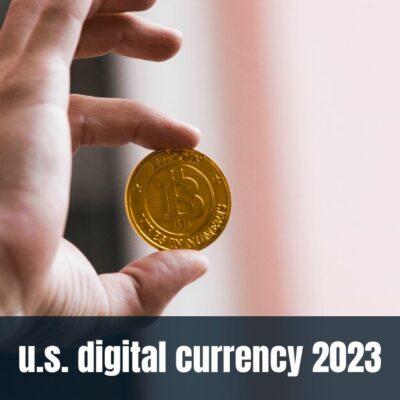Digital currency has been gaining popularity around the world, and the United States is no exception. In recent years, there has been a lot of discussion about the possibility of the U.S. government creating its own digital currency. In this blog, we will explore what a U.S.
digital currency could look like in 2023, and what impact it could have on the U.S. economy.
What is a U.S. Digital Currency?
A U.S. digital currency would be a form of currency that exists only in digital form, backed by the U.S. government. It would be similar to traditional currency in that it would be used to purchase goods and services, but it would exist only in a digital format. This means that it could be stored on a digital wallet, and transferred between individuals or businesses electronically.
Why is the U.S. Considering a Digital Currency?
There are several reasons why the U.S. government is considering a digital currency. One of the main reasons is that digital currencies offer several advantages over traditional currencies. For example, they can be used for faster and cheaper transactions, and they can be more secure and private.
Additionally, a U.S. digital currency could help to reduce the amount of cash in circulation, which could help to reduce the risks associated with physical currency, such as counterfeiting and theft. This could also make it easier for the government to track and regulate financial transactions.
What Would a U.S. Digital Currency Look Like in 2023?
If the U.S. government were to create its own digital currency in 2023, it would likely be based on blockchain technology. Blockchain technology is a decentralized ledger that records transactions in a secure and transparent manner. This means that the U.S. government could use blockchain technology to create a secure and transparent digital currency that could be used for transactions across the country.
One possibility for a U.S. digital currency is that it could be created in partnership with the Federal Reserve, which is the central bank of the United States. The Federal Reserve could issue the digital currency, which would be backed by the U.S. government. This would ensure that the currency was stable and reliable, and it would also make it easier for the government to regulate financial transactions.
Another possibility is that the U.S. government could create its own digital currency without the involvement of the Federal Reserve. In this case, the government would create its own blockchain network, and issue the digital currency directly to individuals and businesses. This would give the government more control over the currency, but it could also make it more vulnerable to cyber attacks.
What Impact Could a U.S. Digital Currency Have on the Economy?
A U.S. digital currency could have a significant impact on the U.S. economy. One potential benefit of a digital currency is that it could make transactions faster and more efficient. This could make it easier for individuals and businesses to conduct transactions across the country, which could help to stimulate economic growth.
Additionally, a U.S. digital currency could help to reduce the risks associated with physical currency. For example, it could reduce the risks of counterfeiting and theft, which could help to increase confidence in the U.S. financial system.
However, there are also some potential risks associated with a U.S. digital currency. One potential risk is that it could lead to an increase in financial surveillance. Because digital currencies are stored on a digital ledger, they can be more easily tracked and monitored by the government. This could lead to concerns about privacy and civil liberties.
Another potential risk is that a U.S. digital currency could be more vulnerable to cyber attacks. Because the currency would be stored on a digital ledger, it could be vulnerable to hacking and other forms of cyber attacks. This could pose a significant risk to the financial system and could lead to significant economic losses



